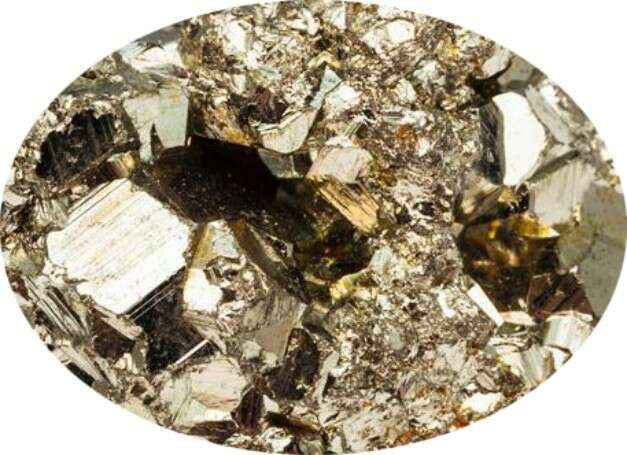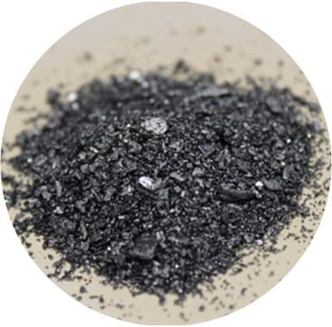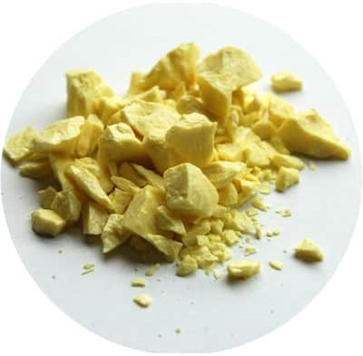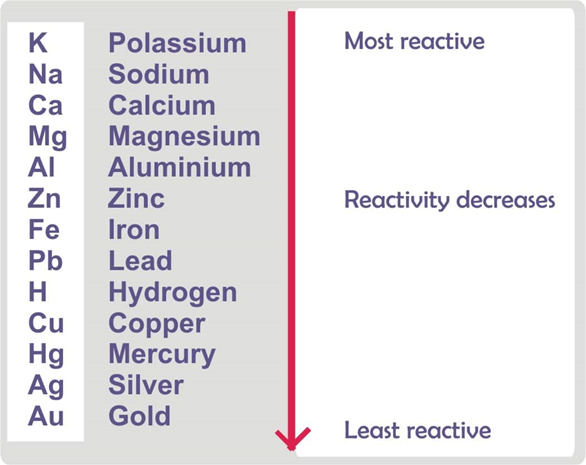The Story of My life Character Sketch
Anne Sullivan : (Helen Keller’s teacher)
A bright beam of light entered Helen’s life in the form of Anne Sullivan when she was just seven years old. Miss Sullivan became Helen’s teacher on 3 March 1887. Helen called the day her ‘soul’s birthday’. From the time she took over as Helen’s tutor, till the day she breathed her last, She was a brilliant teacher, who had immense patience and compassion to touch the heart of the wild, young girl imprisoned in a world that was dark and silent. She was a constant companion, a mentor, a teacher and a friend to Helen. Being blind herself, she knew about the difficulties that Helen had to face. Her methods of teaching were highly innovative and in tune with nature. She was the embodiment of love and patience. It was her expertise, patience and love that helped Helen learn everything she knew and understood about the world. These qualities helped her to deal with a rebellious and active child in the most efficient manner. Though she helped Helen in whatever she did, she understood that Helen was able to stand on her own legs. By taking Helen out with her, she gave her a feel of nature and its beauty. She taught her manual alphabet and helped her to communicate with the world. Her nurturing and loving care helped Helen grow into a perfect adult, all selfless and compassionate. No wonder Helen herself acknowledged- “there is not a talent, or an inspiration or a joy in me that has not been awakened by her loving touch.”
Michael Anagnos (Director of the Perkins Institution for the Blind)
Mr Anagnos was an Orthodox immigrant from Greece. He was the Director of the Perkins Institution for the Blind. It was he who sent Miss Sullivan to Keller’s home. Later on, he and Helen became friends. He encouraged Helen and always appreciated her compositions. He got -The Frost King” written by Helen published in the Institute’s journal. But later the accusation of Helen of plagiarism was a bolt from the blue not only or Helen but also for Anagnos. He felt that Helen had cheated him. Mr Anagnos’ belief that she had intentionally plagiarised the composition broke Helen’s heart. Her pleadings of love and innocence fell to deaf years. This incident ended the relationship between the two.
Kate Adams Keller (Helen’s Mother):
Helen’s mother, Kate Adams Keller, was the second wife of her father and twenty years his junior. She is portrayed as a positive, patient individual, who loved Helen in spite of her disabilities, and understood her struggles and frustrations. Mrs Keller was very intelligent, widely read, and had an excellent memory. She never raised her voice at Helen, but patiently dealt with her problems. Helen was regarded by her relatives ‘as a monster,’ and one of them even suggested to Kate that she was ‘a mental defective’ who would be far better off in an institution. But Kate would not hear of it. Helen clung to her mother’s skirts all day, and Kate’s intense suffering over her beloved daughter was obvious to her friends and family. She was wise enough to find her a good teacher and sent her to Perkins School for the Blind. Later, she supports Helen’s desire for a formal education in school and college. She seemed determined to help Helen lead a normal life. In spite of her other responsibilities, her dedication to Helen was complete and unquestionable. She was witty and rather high-voiced. While the Kellers raised almost everything they needed on their farm, they were not wealthy. Although she had grown up as a Memphis Belle, her life after marriage was of a rugged frontierswoman. Kate lived to be in her eighties.
Captain Arthur H Keller (Helen’s Father):
Like his wife, Helen’s father, Captain Arthur H Keller, too appears to be a supportive figure in Helen’s life. He left the Confederate army and became the editor and proprietor of the North Alabamian, a weekly newspaper until 1885. Later, he was appointed US Marshall for the Northern District of Alabama. He was brave, honest, competent, and respected by his fellow citizens. Helen’s father showed great love and care towards her. Without his support, Helen could not have gone to study in the institutes and schools that she went to, nor could she have enjoyed her time in the countryside and indulged in so many diverse activities. He was a great storyteller and spent hours recounting numerous stories to her. He did not try to discipline her in a harsh way but tried to help her come out of her frustrations by being supportive. Arthur died of a heart attack when Helen was sixteen and Helen mourned his loss greatly.
Mildred: (Helen’s younger sister)
She was Helen’s younger sister and was five years younger than her. Helen was extremely jealous of Mildred as a child and once overturned her cradle. Mildred might have died if her mother had not caught her before she fell on the floor. Later, Helen and Mildred became very attached to each other. She appears to have been very close to Helen, who loved her dearly and expressed her happiness to be near her, for instance, when Mildred also enrolled in the same school, Wellesley, as Helen, she was ecstatic. There are references to happy times the two sisters spent outdoors, exploring the beauty of nature in their own different ways. Apart from the single outburst, when Helen had thrown baby Mildred out of the cradle, the two sisters appear to have been very close.
Questions and Answers Related to The Story of My Life characters
Q1. Describe the role that Anne Sullivan played in helping Helen Keller.
Answer- Anne Sullivan played an extremely important role in helping Helen interact with the people around her. She was the person who helped change the wild little girl into a civilised educated young lady who became an inspiration for others like her. It is after her arrival that Helen experienced the first stirrings of her conscience. Anne’s patience and compassion helped Helen to discover the world around her. It was her creativity and her expertise that helped Helen to learn diverse subjects like geography, biology, history and the languages, as well as a normal person, does. It was with Anne’s help in school and college that Helen could follow the lessons and lectures being delivered by the teachers there. Anne Sullivan dedicated her own life to help Helen to lead as normal a life as possible. She was the key factor in Helen Keller’s growth and accomplishments.
Q 2. The story of Helen Keller is dominated by two themes—determination and perseverance. Throw light on Helen Keller’s character keeping these themes in mind.
Answer- The story has rightly been called an example of perseverance and determination. It shows how Helen struggles in spite of being blind and deaf to communicate with those around her. It is her sheer determination to go to the school that makes her work hard and in a painstaking manner till she is admitted in the school and college of her dreams. For a child who spends the first few years of her life in a deaf and dumb world, she is helped by her teacher to identify objects, to articulate words and finally to communicate intelligently with those around her both by speech and writing. At first, she only understands the people around her when they spell words onto her hand and by reading their lips. Slowly she learns to articulate words from the vibration of the words by placing her hands on their throats. Throughout, she does not give up, despite the frustratingly slow pace of the learning process.
Q 3. While the story is entertaining, the author’s main purpose was probably to inform others about what life is like for people with visual and or hearing impairments. Do you agree?
Answer- I agree with the statement because the whole story highlights the problems that people like Helen face due to their handicaps. It not only creates awareness about the problems of people like Helen but also helps us to appreciate our sight, hearing and speech which we otherwise take for granted. The story talks of the great efforts made by Miss Sullivan to educate Helen and Helen’s own determination to live as normal a life as possible. Her story thus focuses on what an important role is played by a good teacher, and how a student who is truly thirsty for knowledge responds to the teacher’s efforts. The entire story acts as an inspiration for people suffering from similar handicaps, giving them hope of achieving similar successes if they are determined enough.
Q 4. Write a brief paragraph expressing your opinion about whether Helen Keller’s accomplishments were due more to her own determination or to Anne Sullivan’s.
This question could have two answers:
Answer. A., In my opinion, Helen Keller’s achievements were more due to her own determination. Miss Sullivan, of course, did play an important role in her successes but she could not have done much if Helen had not been open to her teaching. It was Helen who had to understand the figures being written on her hand and to read the lips of those around her. Her keen sense of touch and smell also helped her to understand the world around her. She was also very intelligent and understood things around her by intuition. She also reveals a lot of determination on her own because she would not have gone to school or college if she had not been very keen to do so. In fact, in college Miss Sullivan was not of much help because she could not take down the notes as fast as required and Helen had to devise her own method to both take down the notes and answer them which she did on the typewriter. It was Helen’s own efforts that helped her to articulate the words and learn to speak. She would tirelessly repeat the words until she got the pronunciation right.
B, In my opinion, Helen Keller could not have achieved much without the help of her teacher Miss Sullivan. Before the coming of Miss Sullivan, Helen had been like a wild child who was difficult to handle, even for her parents. In fact, we find her locking her mother in the kitchen and laughing outside at her mother’s plight, and almost killing her baby sister Mildred by throwing her out of the cradle. It is only with the arrival of Miss Sullivan that Helen herself says she is able to feel remorse and guilt for the first time. It is her teacher who introduces her to words and then helps her understand words to express abstract feelings. In fact, the effort of the teacher can be traced in the letters that she writes to the various people given at the end of the story. We see her progress from words to sentences and then paragraphs. In fact, there is no single achievement that she is able to make without the support and guidance of her teacher. Even while learning to speak, it is her teacher who helps her pronounce the words correctly. The teacher accompanies her to the various schools she goes to, including college, and helps her all the time to make sense of the world around her. Undoubtedly one cannot undermine the significant role played by her teacher, Anne Sullivan, in helping Helen Keller lead a normal and highly successful life. ‘The most important day I remember in all my life is the one on which my teacher, Anne Mansfield Sullivan, came to me. I am filled with wonder when I consider the immeasurable contrast between the two lives which it connects.’ Keeping this statement in mind, describe the teacher-student relationship between Anne Sullivan and Helen. The relationship between Helen and her teacher as depicted in the story is much more than a normal teacher-student relationship. The teacher here not only teaches her academic subjects but also instils in her a sense of responsibility for her actions. At the beginning, Helen is a wild undisciplined child who cannot be controlled by anyone in the house. In fact, her parents appear completely at a loss on how to deal with her. She locks people up, throws her sister out of her cradle, smashes her doll, almost burns herself, cuts the hair of her friend, to name a few of the wild things she indulges in. It is the teacher who is able to connect with her and give her hope and confidence and help her to make sense of the dark and silent world she is trapped in. Their relationship becomes more of a life-long companionship, as Miss Sullivan accompanies Helen everywhere, and even helps her in college.
Q 5. ‘The mystery was revealed to me. I then knew that ‘w-a-t-er’ meant the wonderful cool something that was flowing over my hand. That living word awakened my soul, gave it light, joy, set it free!!’ What does this tell you about Helen Keller’s character?
Answer- Helen was a deaf and dumb child who had no means of communicating with the outside world before the coming of her teacher Miss Sullivan. She could not feel any softness or sensitivity towards the other people in her environment. It is only when the teacher arrived that she was slowly able to make sense of the world around her. She was an extremely intelligent child and her frustration rose from the fact that she knew that she was denied access to a lot of knowledge and experience because of her blindness and deafness. When Miss Sullivan started teaching her by spelling words on her hand, Helen was finally able to correlate the abstract words with the tangible world around her. Thus, she realised what ‘water’ meant and finally, realised that shop he had found the means to understand the world. This made her feel very happy and hopeful. Her joy at being able to identify the objects around her in this manner reveals her deep thirst for knowledge and her quick intelligence in being able to pick up and learn so quickly. All her achievements later on in her life were due to her keen interest and determination to excel and overcome her handicap. In fact, the joy that she gets at being able to express herself lifts her spirits and gives her a deep joy that helps her set herself free from the bounds of her disability. She triumphs over her problems and evolves into a great human being.
Q 6. Do you think Helen would have been able to succeed in life without her parents’ support? Explain.
Answer- Helen’s parents played a very important role in her success. Firstly, they gave her love and support throughout her life. They showed enormous patience in dealing with her tantrums and helped her cope with her disabilities. They understood her frustration and the challenges she had to face to accomplish the simplest of tasks. Her parents tried all avenues to help her, be it taking her to the oculist, or to the blind school. They hired Miss Sullivan as her teacher, and this gave Helen a new life. Later, they made sure that Helen had the chance to go to a school and college of her choice. While Helen herself worked hard to achieve each milestone, she could not have gone far if her parents had not supported her financially, emotionally and mentally. Even after her father’s death, her education was not compromised. Nowhere do her parents seem to regret or resent having to care for a child with disabilities.
Q 7. How would you describe Helen’s relationship with her sister Mildred?
Answer- Helen and her younger sister Mildred appear to have had a very close relationship. In the beginning, when Helen was a child, she was unable to accept the new baby, and almost killed her by overturning the cradle. However, this was not intentional, and only expressed the feelings of a young child, trapped in a dark, silent world. With the coming of Miss Sullivan and Helen’s gradual exploration of the world, this frustration lessened and she found herself able to understand feelings of love and affection. With this growing sensitivity, there was a strong bond which developed between the two sisters. As young girls, they often went on walks and explored the world around them. Later, they went to the same school, which made Helen very happy.
Q 8. Do you think Helen could have achieved success if her parents had not been wealthy? This question could have two answers:
Answer- A No, I don’t think it would have been possible for Helen to achieve success if her parents had not been wealthy enough. Helen’s first successful communication took place only after her teacher arrived. However, Miss Sullivan was a live-in teacher, who stayed with them for many years. A family with less money could never have afforded this expense. Secondly, her family took her on several trips and she had the luxury of experiencing the sea, the forests, the city, etc. All this needed money, and it would not have been possible for her to understand what the world around her was like, otherwise. Finally, Helen gained an understanding that went beyond just learning about the world. She went to school and then to college. She had private tutors from time to time. She also interacted with different people and took an interest in analysing the situations around her. This advanced engagement with the world was only possible because of the financial support of her parents, which ensured that she had every experience and advantage possible.
Yes, I feel that Helen could still have been a success, even if her parents had not been from a wealthy background. This is because right from her childhood, she seems to have been very determined, and very intelligent. She took an initiative to learn more, and that is what pushed her ahead, throughout life. In fact, it is quite possible that the only reason her parents invested so much money in her education was simply that to, begin with, Helen was such a bright and promising girl. Even if they had not had that much money, her struggle against her disability would have continued. Her success may have taken longer, and the road may have been tougher in some respects. However, it is only when there is a will that a person can rise above a disability so spectacularly, and this will would have seen Helen rise, no matter what.
Q 9. Helen’s mother was the strongest foundation of Helen’s life. Describe?
Answer- Helen’s illness had left the titinily broken especially her mother. She could not sit back and see her daughter suffer. Much before Helen’s temper tantrums began, her mother had already cloned the groundwork to see if there was any scope of educating for her little girl. She contacted doctors to help cure Helen. Her efforts were rewarded when Mrs Anne Sullivan was sent to their house to teach Helen.
Q 10. Sketch the character of Helen as an eager student?
Answer- Though Helen was an eager and quick learner, yet she was impatient and rarely took it favourably to be contradicted. After she had been gifted by all that Ms Sullivan had got for her, the teacher tried to impress upon her young student the fact that do-l-1 was the name of the particular object. Later she endeavoured to tell that mug and watt-er were two different things. This repeated drill annoyed Helen so much that she dashed the doll gifted to her by Ms Sullivan. Not to be deterred by this sight, took Helen to the good house where someone was drawing water. She placed Helen’s hand under running water and spelt the word into her hand repeatedly. It did not take long for Helen’s receptive mind to grasp what was being told to her. She felt her soul awakening to a new world.
Q 11. Helen learnt from life itself. What role did her teacher play in it?
Answer- Helen’s teacher taught her by illustrating a story or a poem and she kept on learning grammar, hard sums, definition, etc. She learnt all these lessons in the lap of nature- sometimes amongst the flowers and sometimes in the orchard. Helen learnt Geography, Arithmetic. Zoology and Botany all in a leisurely manner. Arithmetic seemed a disinteresting subject to Helen. In science. she was taught the growth of the plant in actual form. She enjoyed her lessons as she learnt them from life itself. But it was all because of her teacher who was teaching her in such a way that everything around her breathed of love, joy and was meaningful. Helen was delighted in the company of her teacher as she had a great influence on her life.
Q 12. Who was Mildred? How did Helen start enjoying her company?
Answer. – Mildred was Helen’s sister. She was a loving girl and enjoyed Helen’s company at the foot of the mountain where there was a railroad and about a mile distant was a trestle spanning a deep gorge. Helen had never actually been there until one day when she, along with her sister and Miss Sullivan, got lost in the woods. They came across the trestle, which was a shortcut to their home. Since they were lost, they decided to take this way in spite of the dangers: the tics were wide apart and quite narrow. Feeling the rails with the toes, Helen moved on the trestle cautiously but without fear. Suddenly, the train was heard coming in from the other side. They had to climb quickly down upon the cross braces while the train passed by. With some difficulty, they regained the track. When, ultimately, they reached back home, it had grown quite dark and all the family members were out looking for them.
Q.13- How did Mr Anagnos react on Helen’s investigation?
Answer. – Mr Anagnos was a very caring person and he had a deep love and affection for Helen. Helen also respected and admired him. She wrote her very first book ‘The Frost King’ and decided to gift it to Mr Anagnos. Overwhelmed by Helen’s efforts, he got it published only to find that it had been a plagiarised version. This episode led to a lot of bitterness and he assumed that Ms Sullivan and Helen had deliberately cheated on him by stealing someone else work in order to impress him. He broke off all the ties with her. He was so put off that he turned a deaf car to the pleadings of love and innocence.










